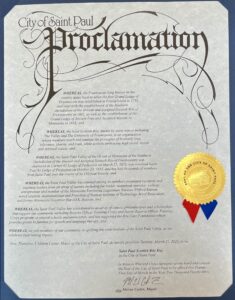A Brief History of the Scottish Rite
The lineage of the Scottish Rite can be traced to a period from 1726, although some of its rituals may have a legacy dating to the 1600’s. There are early allusions to “Scottish” Masonry, i.e., degrees with a “Scottish” title, in manuscripts dating back to 1733. But the most likely beginning of the Scottish Rite can be traced to Bordeaux and Paris, France where the ritual basis for the second temple degrees can be dated to 1743. The establishment of the Chapter of Clermont in 1754 outside of Paris, by Chevalier de Bonneville, honoring the Duc de Clermont, then Grand Master of the English Grand Lodge of France, may have worked as many as 25 degrees during its four year period of existence.
The Chapter of Clarmont was replaced by the Knights of the East and Emperors of the East and West, the latter becoming known in France as the Rite of Heredom during the 1750’s. This Rite organized the Rite of Perfection, comprising of 25 degrees, 22 of which were called the haut grades, or high degrees, with the three degrees of the symbolic lodge added. A document pertaining to the Rite of Perfection, known as the Secret Constitutions of 1761, designated officers as Inspectors General of the Thirty-third degree.
With the emergence of this document, a joint patent was issued from the Grand Lodge of France and the Emperors of the East and West to a merchant named Etienne (Stephen) Morin for the purpose of establishing the “Order of the Royal Secret” and promulgating the higher grades of Masonry in the Americas. This patent granted Morin the title of Inspector General, with the authority to create other inspectors and to establish lodges to work in “the perfect and sublime degrees.” A year later, the Grand Constitutions of 1762 was adopted, providing for 25 degrees, including the three degrees of Craft Masonry, with authority to establish lodges and work the degrees under Inspectors General and their Deputies. From Morin’s original authority, patents were granted establishing the Rite of Perfection in the West Indies, Albany, New Orleans, Philadelphia, and Charleston.
The Grand Constitutions of 1786, purported to be adopted in Berlin on May 1, 1786, provided for a Rite consisting of Thirty-three degrees, from one to thirty-three, under the title of the Ancient and Accepted Scottish Rite and governed by a Supreme Council. This constitution created the structure and governance of the Scottish Rite as it is practiced in the United States today. A Supreme Council of nine members was opened for the first time in Charleston, South Carolina, in May, 1801, thus establishing the “Mother Council of the World.”
All legitimate workings of the Ancient and Accepted Scottish Rite of Freemasonry, including those practiced in Oklahoma, now provide for a system of Thirty-three degrees. In most jurisdictions, the authority over the first three degrees is relinquished to the Grand Lodges of Ancient, Free, and Accepted Masons within each state, thus providing a homogenous partnership in promulgating a progressive system of moral and ethical lessons, which is the true mission of Freemasonry.
A Brief History of Saint Paul Scottish Rite


The Valley of St. Paul, Lodge of Perfection, celebrates 150 years of history this year.
Please save October 4, 2023 on your calendar for our celebration dinner and feast.